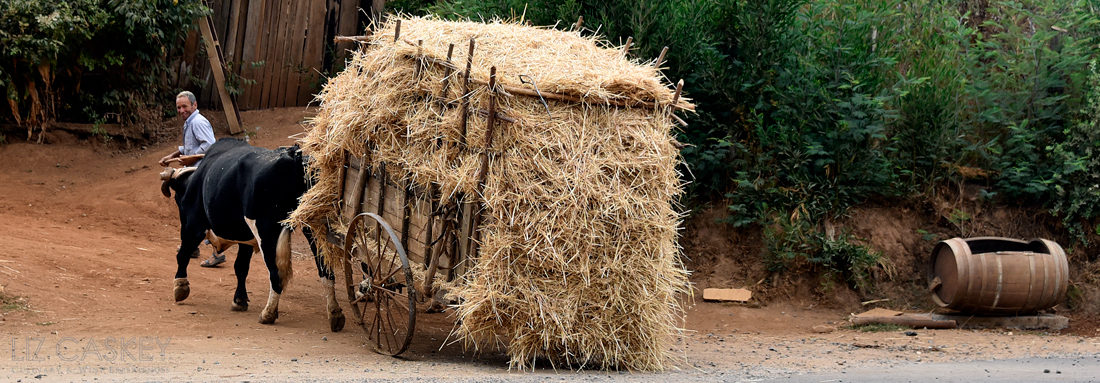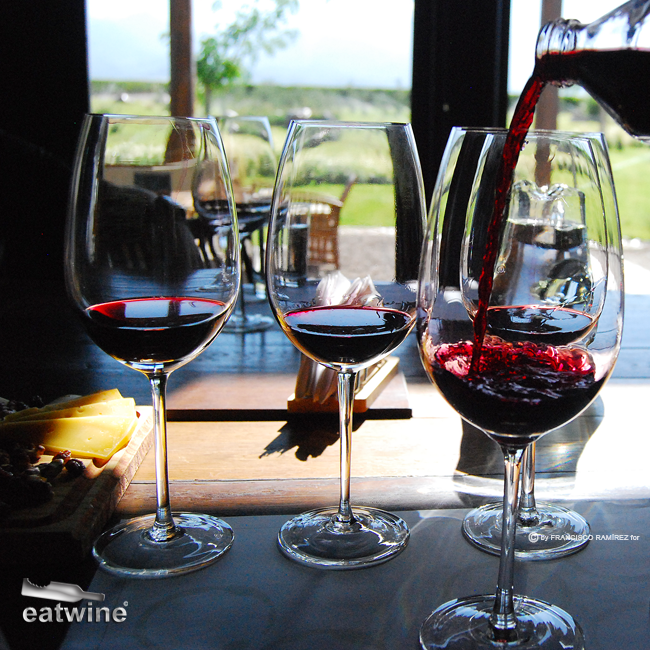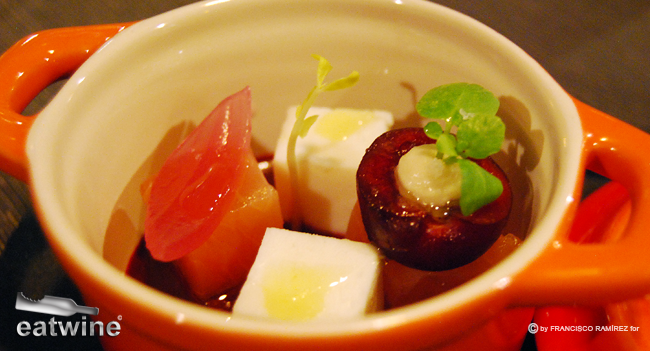There’s a popular saying that “red wine goes with meat and white wine goes with fish, or white meats”. Although this may be very overly generic, what happens when you take a break from meat and focus on vegetables; or are vegetarian? What happens to the above-mentioned wine pairing hierarchy? Does it break down? Do vegetables combine with any wine? Absolutely. Grapes, just like vegetables, come from Mother Earth and one is made for the other. They completely complement each other, you only have to learn a few tricks to pair them perfectly. Here are some of my learning experiences and examples of successful pairings on this journey of eating healthily (and mostly vegetarian)–but always with great wine in my glass.
First and foremost, when thinking about pairing vegetables or vegetarian dishes with wines, the same basic concepts apply as with meat. Ask yourself, “What is the function of the wine here?” Is the dish begging for a wine with lots of acid to complement some green notes or a tannic wine to cut through fat and intensity of flavors? That’s the starting point.
Sauvignon Blanc: As a “lean” white wine, Sauvignon Blanc goes well with vegetables of similar characteristics. They walk together, holding hands, with green salads and it’s an incredible partner for raw tomatoes, including Chile’s famous fresh tomato salad. It’s also a good companion for brussel sprouts roasted or sautéed in olive oil (or mix it up with hazelnut oil). Green vegetables like green beans or zucchini, raw or cooked “al dente”, flirt happily with a few drops of soft vinegar made from fruit (raspberry, champagne) or a squeeze of lemon. This completely meets the natural zingy acidity of a Chilean coastal Sauvignon Blanc. Since Sauvignon Blanc some times has herbaceous notes, fresh herbs like chives or classic basil pesto are a perfect ally, as is a peppery, green olive oil.
Chardonnay: With Chardonnay, the biggest determinant in pairing is the presence of oak (or lack thereof) and if the wine has malolactic fermentation or not. These two variables greatly affect the pairing, types of vegetables, and style of cooking. For example, a Chardonnay with aging in oak barrel hailing from Chile’s Casablanca Valley tend to have tropical notes and a slightly toasted flavor. This type of Chardonnay combines best with creamy cheese sauces (or vegan sauces made with silken tofu and nutritional yeast) that can accompany strong-tasting vegetables like broccoli or cauliflower, or bath a baked potato. Similarly, the wine’s toasty notes reflect the same flavors in vegetable dishes so almonds, cashews, pumpkin seeds, or pine nuts are great allies with Chardonnay. Want a wine bullet to the head? For your next movie, try a Chardonnay with popcorn popped in coconut oil and dosed with sea salt and nutritional yeast.
Another technique is to “marry” sweeter vegetables like corn, butternut squash, sundried tomato, and roasted red pepper with a Chardonnay with less barrel. Here pairings come to mind like Chilean corn-basil pudding, pastelera, pumpkin ravioli/soup/roasted, and even Middle Eastern mezze. These same veggies, you can chop up and add to a fresh arugula or watercress salad to round out their intensity with more vegetable notes. For vegetarian curry dishes from Southeast Asia (full disclosure: my obsession), an unoaked Chardonnay from the Limarí Valley with crunchy acidity, minerals, and slight sweetness cuts through the spiciness and tangos with the coconut milk. Oh. Yeah.
Pinot Noir: Mushrooms. The. Best. Wine. Partner. Ever. Quite simply, a match made in heaven. Specifically, mushrooms should be wild, not those tasteless button variety. We’re talking about porcini, morels, golden trumpet, shitake, whichever variety you can get ahold, or even better a mix, that has a truly “earthy” taste. A good Pinot Noir also evokes this same flavor. For this delicate grape also consider pairing earthy tubers like native potatoes, sweet potatoes, or roasted beets drizzled with a touch of truffle oil. We are drinking a lot of generous, intense Pinot Noirs from the San Antonio valley that have this earthiness but lots of fruit and body. Think Pinot pairing with veggies stops here? No way. Give hearty bean dishes a go with a Pinot with a more moderate body and fruit forward notes like Chile’s delicious porotos Granados (corn-fresh bean-pumpkin-basil stew) or a warm bean salad with sage. Honestly, this grape is a chameleon and goes well with so many vegetables. Mix it up and see what works for you.
Medium Reds: In this category, I include Merlot, Carmenere, Carignan and some of the Malbecs that are not “bodybuilders”. Although these wines are all made from different grapes and have their own unique personalities, the common thread here is smooth tannins and good acidity. This is a total turbocharger for flavor. What’s working behind the pairings is the concentration of natural sugars present in the vegetables that turns them into a manjar, or culinary delight. Once again, here we bring in earthy vegetables like spuds, beets, parsnips, pumpkins and squash, roasted peppers to complement a red of this style. Concrete examples. Roasted vegetable lasagna is an ideal mate for a red like this since its intense, deep flavor is “lightened” up by the brightness and fruitiness of the wine on the palate. However, the star pairing is, without a doubt, tomato in all its (cooked) forms. Homemade marinara sauce, roasted cherry tomatoes, roasted tomato soup, bruschetta, however you want it, the acid in those tomatoes twists and turns with the acid in these reds and leaves you wanting more.
Tannic Reds: Cabernet Sauvignon and Syrah are a bit more difficult to pair with vegetarian dishes since their tannic structure begs for ingredients with fat (usually animal). Of my best experiments so far, roasted eggplant has emerged as the champion given its smoky notes and inherent “meatiness”. I have made some killer dishes like vegan eggplant Parmesan (gluten free I may add, substitute almond meal for bread crumbs), and Greek vegetarian moussaka. The combo of pumpkin with sage leaves fried in olive oil (ravioli, soup, mashed) works incredibly well with Chilean coastal Syrah from San Antonio or Casablanca as the wine from this region takes on herbaceous notes of thyme and wild sage.
These pairings and tips are by no means exhaustive. It’s the tip of the iceberg on my path of learning to tastily pair vegetables and wines. What’s certain, though, is that there are thousands of possibilities.















